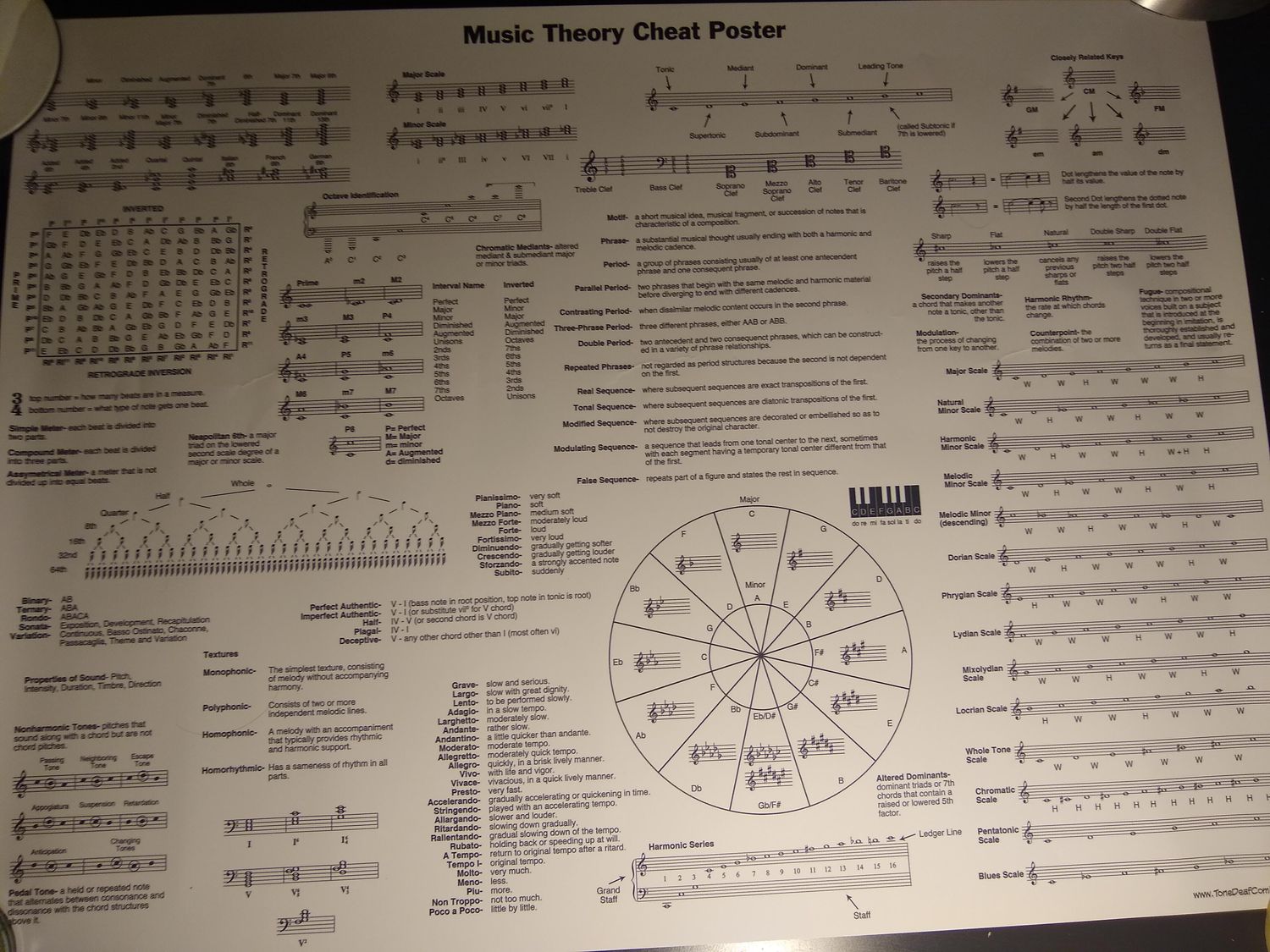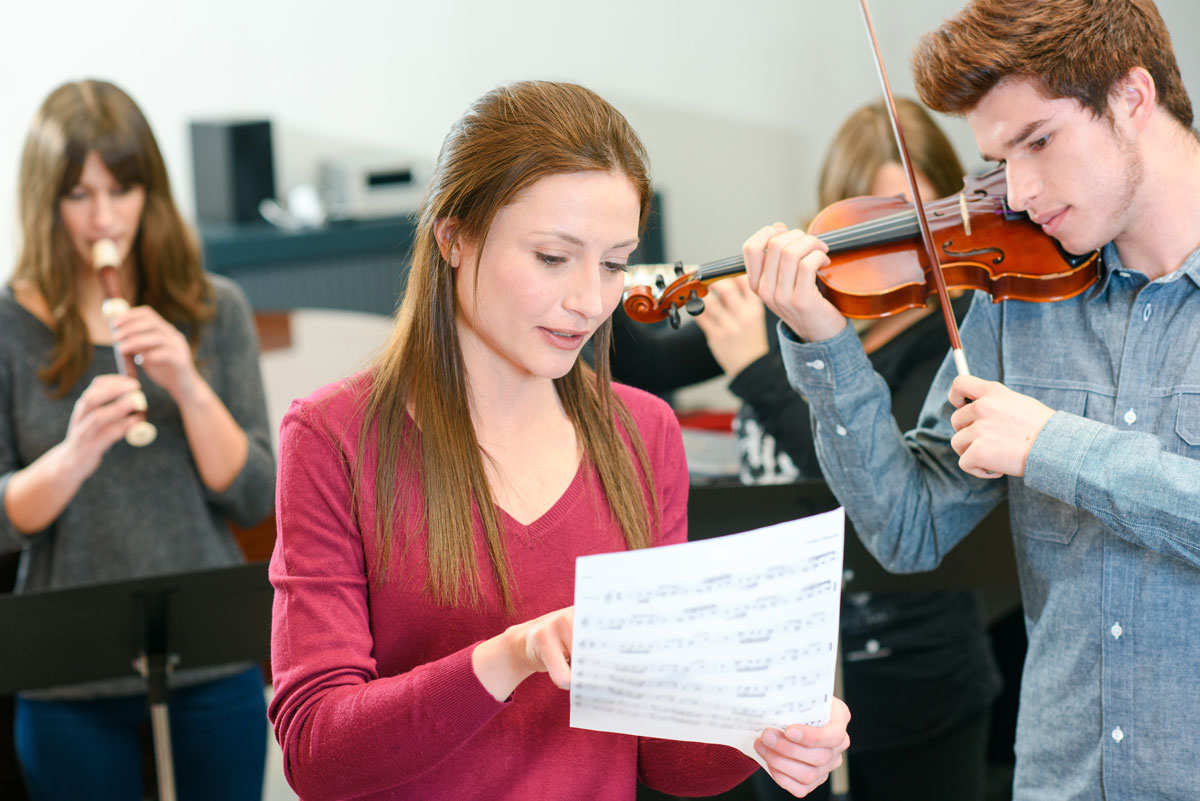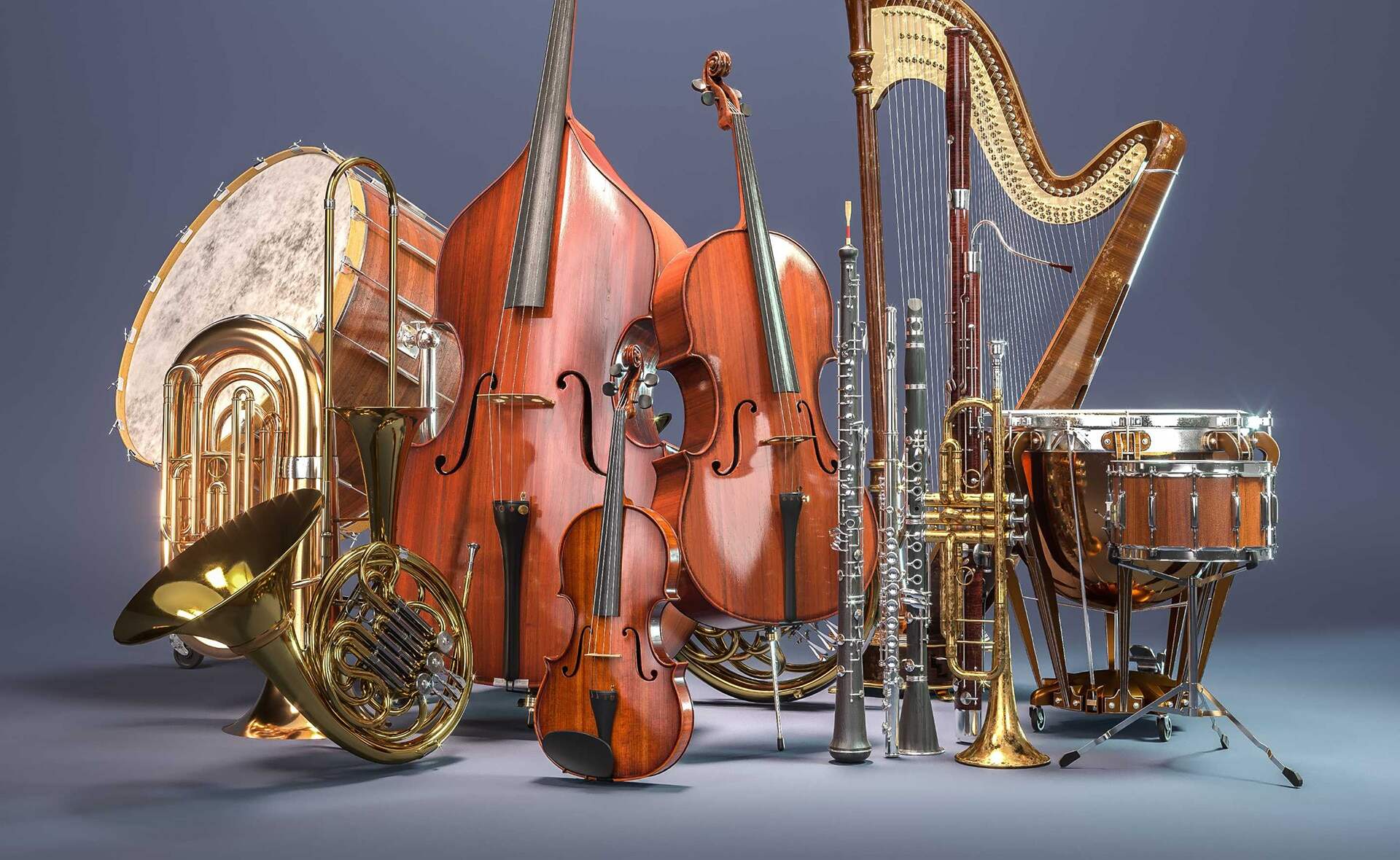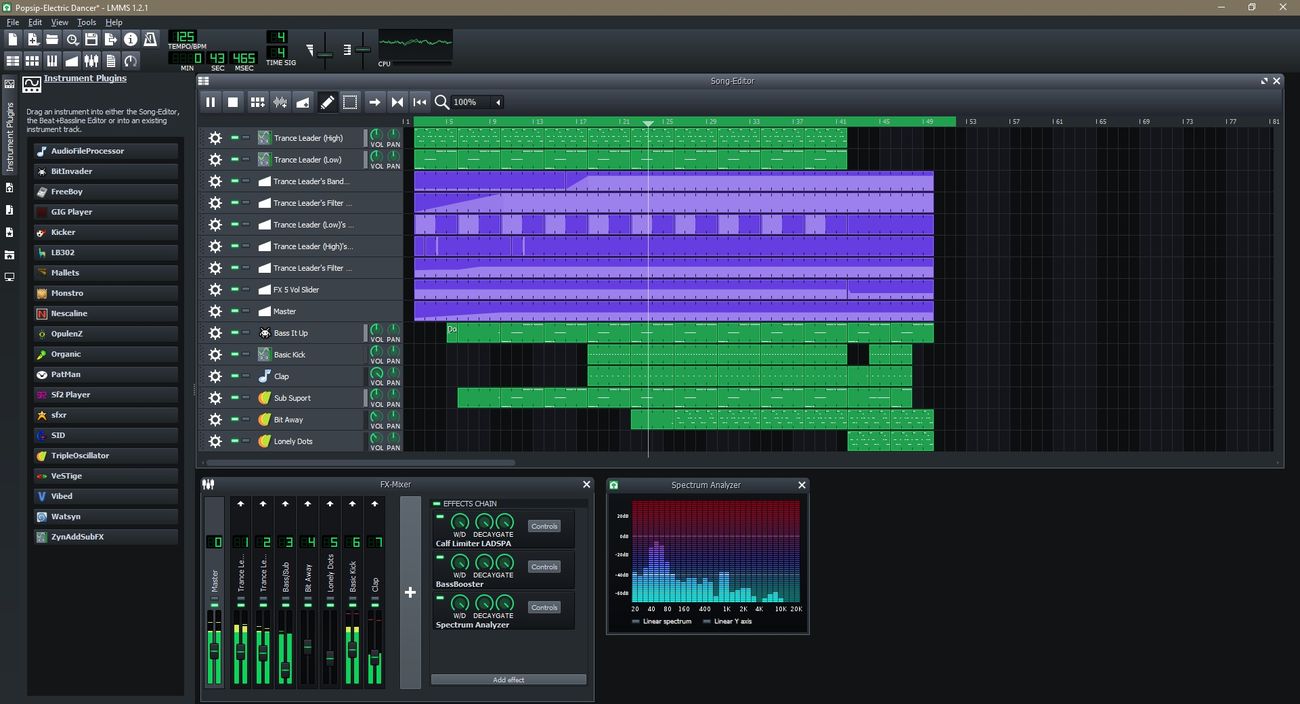Home>Production & Technology>Music Theory>Music Theory How Important When Learning Instrument


Music Theory
Music Theory How Important When Learning Instrument
Published: February 1, 2024
Learn why music theory is crucial when learning an instrument. Enhance your understanding of melodies, chords, and composition for a well-rounded musical journey.
(Many of the links in this article redirect to a specific reviewed product. Your purchase of these products through affiliate links helps to generate commission for AudioLover.com, at no extra cost. Learn more)
Table of Contents
- Introduction
- The Basics of Music Theory
- Understanding Musical Notes and Scales
- Rhythm and Timing in Music
- Chords and Harmonies
- Key Signatures and Transposition
- Sight-reading and Musical Interpretation
- Improvisation and Composition Skills
- Enhancing Technical Proficiency
- Importance of Music Theory in Learning an Instrument
- Conclusion
Introduction
When it comes to learning a musical instrument, there is often an underlying question: how important is music theory? Some may argue that technique and practice alone are enough to excel, while others believe that a solid foundation in music theory is crucial for musical development. In reality, the truth lies somewhere in between.
Music theory is the study of the fundamental principles that govern music. It encompasses a wide range of concepts, including notes, scales, chords, rhythms, harmonies, and more. While it may seem like a daunting subject, understanding the basic principles of music theory can greatly enhance your musical abilities and open doors to new opportunities.
When learning an instrument, it can be tempting to focus solely on mastering technical skills – playing the right notes at the right time. While this is undoubtedly important, music theory provides a deeper understanding of why certain notes, chords, and rhythms work together to create beautiful melodies and harmonies.
By studying music theory, you will gain a greater appreciation for the intricacies of music and its underlying structure. This knowledge will not only improve your overall musicality but also allow you to communicate and collaborate more effectively with other musicians.
In the following sections, we will explore the basics of music theory and delve into its relevance to learning a musical instrument. Whether you are a beginner or an experienced musician, understanding music theory will undoubtedly take your playing to the next level.
The Basics of Music Theory
Music theory provides the foundation for understanding how music works. It explores the relationship between notes, scales, chords, rhythm, and harmony. By grasping these fundamental concepts, you can unlock the secrets of music and develop a more profound musical understanding.
One of the first concepts to delve into in music theory is understanding musical notes. Notes represent the building blocks of music and are represented by letters of the alphabet (A, B, C, etc.) and symbols like sharps (#) and flats (b). They are organized into a series of pitches that make up a musical scale.
A scale is a sequence of notes arranged in ascending or descending order. The most common scale in Western music is the major scale, which consists of eight notes and follows a specific pattern of whole steps (W) and half steps (H). Understanding scales is crucial as they provide the framework for constructing melodies, harmonies, and chords.
Chords are formed by combining three or more notes played simultaneously. They add depth and richness to music, and different chord progressions create various emotional moods. In music theory, chord progressions are the sequence of chords played in a piece of music. Understanding how chords interact with one another and the principles of chord progression opens up a world of creative possibilities.
Rhythm is another essential aspect of music theory. It determines the timing and duration of individual notes and rests in a composition. Through rhythm, musicians bring life and energy to their performances. Understanding rhythm allows you to develop a sense of timing, play with precision, and interpret a piece of music accurately.
Harmony is the vertical aspect of music, referring to the combination of multiple notes played together. It is the backbone of chords and provides support and stability to the melody. Understanding harmony allows you to accompany other musicians, compose your own music, and appreciate the complex layers of harmony in a piece of music.
As you dive deeper into music theory, you will also encounter concepts such as key signatures, transposition, sight-reading, improvisation, and composition. These elements further expand your musical repertoire and enable you to explore different genres and styles.
By mastering the basics of music theory, you develop a solid foundation on which to build your musical skills. It enhances your ability to read sheet music, interpret musical symbols and notations, and communicate effectively with other musicians. Moreover, it empowers you to analyze and understand the music you play, enabling you to add your own personal touch and artistry to each performance.
Understanding Musical Notes and Scales
At the heart of music theory lies an understanding of musical notes and scales. These foundational concepts serve as the building blocks of melodies, harmonies, and chords, allowing musicians to create beautiful and cohesive compositions.
Firstly, musical notes are the individual sound units that make up a piece of music. They are represented by letters of the alphabet (A, B, C, etc.) and can be categorized into different pitches. The pitch of a note is determined by its frequency, with higher frequencies producing higher pitches and lower frequencies producing lower pitches.
Notes are organized into scales, which are sequences of musical tones arranged in ascending or descending order. The most commonly used scale in Western music is the major scale, which consists of eight notes and follows a specific pattern of whole steps (W) and half steps (H) between adjacent notes.
For example, in the key of C major, the notes in the scale are C, D, E, F, G, A, B, and C. The pattern of whole steps and half steps in the C major scale is W-W-H-W-W-W-H. This pattern applies to all major scales, although the starting note (or tonic) may vary.
Understanding scales is crucial for musicians as they provide a framework for creating melodies, harmonies, and chords. By using the notes within a given scale, musicians can ensure that their compositions sound harmonious and cohesive.
In addition to the major scale, there are also other types of scales, such as the minor scale, which has a different pattern of intervals and imparts a different mood to the music. There are also modes, which are variations of the major and minor scales and add further versatility to a musician’s repertoire.
Knowing and understanding scales allows musicians to navigate the keyboard, fretboard, or any other instrument with confidence. It facilitates improvisation, as musicians can freely explore and experiment with the notes within a scale, creating unique melodies and harmonies on the spot.
Furthermore, understanding scales enables musicians to transpose music, which is the process of changing the key of a piece while maintaining the same relationships between the notes. Transposition is a valuable skill that allows musicians to adapt music for different instruments or vocal ranges while preserving its inherent musical qualities.
By delving into music theory and developing a solid understanding of musical notes and scales, you gain a deeper appreciation for the structure and organization of music. This knowledge empowers you to create, interpret, and perform music with greater skill and artistry, and opens up a world of musical possibilities.
Rhythm and Timing in Music
When we listen to music, we often tap our feet or nod our heads to the beat. This beat, along with the arrangement of notes and rests, creates rhythm and gives music its sense of movement and groove. Understanding rhythm and timing in music is crucial for musicians, as it provides the foundation for expressive and precise performances.
Rhythm refers to the pattern of durations and accents in music. Each note and rest has a specific duration, indicating how long it should be held or how long of a pause should be taken. The organization of these durations creates rhythmic patterns that shape the flow and energy of the music.
Timing, on the other hand, refers to the ability to play or sing notes accurately in relation to the beat or pulse of the music. It involves maintaining a steady tempo and executing rhythms with precision. Good timing allows musicians to play together in sync and create a cohesive musical experience.
In music notation, rhythms are represented by different symbols. For example, a quarter note represents a note with a duration equivalent to one beat, while an eighth note represents a note with half the duration of a quarter note. Rests, indicated by symbols such as whole rests or quarter rests, indicate periods of silence or pauses in the music.
Developing a strong sense of rhythm involves recognizing and internalizing the different note durations and rests. Musicians practice counting beats, subdividing rhythms, and practicing with a metronome to improve their timing and develop a steady pulse.
Understanding different time signatures is also important in rhythm and timing. Time signatures indicate the number of beats in each measure and the type of note that receives one beat. Common time signatures include 4/4 (four beats per measure, quarter note receives one beat) and 3/4 (three beats per measure, quarter note receives one beat).
Musicians follow the rhythmic patterns indicated by the notation and time signature, but they also have room for interpretation and expression. The way a rhythm is played can vary in terms of dynamics, articulation, and emphasis. This adds personality and individuality to a performance.
Accurate timing and rhythmic control are essential for ensemble playing, as musicians must align their playing with other performers to create a cohesive sound. It is also crucial for solo performances, as it allows for precise execution of musical phrases and enhances the overall musicality of the performance.
In summary, rhythm and timing play a critical role in music. They give music its sense of movement, groove, and energy. Musicians who master these aspects of music can create engaging and expressive performances, conveying emotions and connecting with their audience on a deeper level.
Chords and Harmonies
Chords and harmonies are fundamental components of music that add depth, color, and emotion to compositions. Understanding how chords and harmonies work is essential for musicians, as it allows them to create rich and harmonically compelling arrangements.
A chord is a group of three or more notes played simultaneously. It is formed by combining different intervals (the distance between two notes) to create a specific quality or sound. The most basic chord is a triad, which consists of a root note, a third interval, and a fifth interval. Triads can be major, minor, diminished, or augmented, depending on the intervals used.
Chords serve as the backbone of a piece of music, providing support and stability to the melody. They help define the mood and tonality of a composition. By using different chord progressions, musicians can evoke different emotions and create tension and release within their music.
Harmony refers to the vertical aspect of music, meaning how different notes and chords sound when played together. When multiple voices or instruments play different notes simultaneously, they create harmonies. Harmonies can be consonant (pleasing to the ear) or dissonant (creating tension or a sense of unease).
Music theory provides guidelines and principles for constructing harmonies that sound pleasing and balanced. Understanding harmonic progressions, chord inversions, and voice leading allows musicians to create smooth and melodic transitions between chords.
Harmonies can be simple or complex, depending on the style and complexity of the music. In popular music, many songs follow common chord progressions like the I-IV-V (one-four-five) progression, while in classical music, composers employ more intricate harmonic structures and use modulations to change keys and evoke different moods.
Understanding chords and harmonies is particularly important for accompanying other musicians. In ensemble settings, musicians need to listen and respond to the chords being played by other instruments or performers. This requires a solid understanding of chord progressions and the ability to harmonize with the rest of the group.
Furthermore, a knowledge of chords and harmonies is beneficial for songwriting and composition. Musicians can experiment with different chord progressions, voicings, and harmonic devices to create unique and captivating pieces of music.
Ultimately, chords and harmonies form the harmonic foundation of music. By understanding how chords are constructed and how harmonies work, musicians can create harmonically rich compositions, accompany other musicians effectively, and craft their own unique musical voice.
Key Signatures and Transposition
Key signatures and transposition are important concepts in music theory that allow musicians to navigate different tonalities and transpose music to different keys. Understanding key signatures and transposition enhances a musician’s versatility and adaptability, enabling them to perform in a wider range of musical settings.
Key signatures indicate the tonal center or the key of a piece of music. They are represented by sharps (#) or flats (b) placed at the beginning of a staff. Key signatures help simplify notation by indicating which notes are consistently altered throughout the piece. For example, a piece in the key of G major will have an F# indicated in the key signature.
Key signatures follow a specific pattern. Major keys have a predictable sequence of sharps or flats, known as the circle of fifths. As you move clockwise around the circle, each successive key adds one additional sharp or flat. For example, the key of C major has no sharps or flats, while the key of G major has one sharp (F#).
Understanding key signatures allows musicians to anticipate the altered notes that will occur in a particular key. It also facilitates sight-reading, as they can quickly recognize the key and adjust their playing accordingly.
Transposition is the process of changing the key of a piece of music while maintaining the same relationships between notes. This is achieved by shifting all the pitches up or down by the same interval. Transposition is useful in a variety of situations, such as when accompanying a singer in a different vocal range or when playing along with other instruments in a different key.
To transpose music, musicians need to understand the relationship between notes and intervals. By applying the same interval shift to all the notes in the original piece, they can effectively transpose the music to a new key. For example, if a piece is in the key of C major and needs to be transposed up a whole step, all the notes would be shifted up by two semitones to the key of D major.
Transposition is not limited to shifting the music to a higher or lower key. It can also involve transposing to different modes or altering the tonal center to create a different musical effect. Musicians with a strong understanding of transposition have the flexibility to adapt music to different situations and perform with other musicians seamlessly.
By mastering key signatures and transposition, musicians can expand their musical repertoire and perform in a variety of musical contexts. They become more versatile and adaptable musicians, capable of playing in different keys and adjusting their playing to fit any musical setting.
Sight-reading and Musical Interpretation
Sight-reading and musical interpretation are skills that go hand in hand in the musical world. Sight-reading refers to the ability to read and perform a piece of music in real-time, while musical interpretation involves adding personal expression and artistry to a composition. Mastering these skills is essential for musicians, as it allows them to perform confidently and bring a piece of music to life.
Sight-reading requires a solid understanding of music theory and notation. Musicians must be able to quickly identify notes, rhythms, dynamics, articulations, and other musical symbols as they read the music. They must also have a good sense of timing and be able to translate the notation into physical movements on their instrument.
Sight-reading is especially important in ensemble settings or when performing with new musicians. Musicians must be able to adapt quickly and follow the music as it is being played, ensuring that they stay in sync with the rest of the ensemble. It allows for efficient rehearsal and performance preparation, saving time and enabling smoother musical collaboration.
Musical interpretation, on the other hand, is the process of bringing personal expression and emotion to a piece of music. It involves understanding the composer’s intentions, the historical context of the music, and the performer’s own artistic choices. Musical interpretation is what makes a performance unique and captivating.
Interpretation can include variations in dynamics, tempo, phrasing, articulation, and other expressive elements. Musicians bring their individuality and musical sensibilities to the piece, creating a personal connection to the music and conveying emotions to the audience.
Both sight-reading and musical interpretation require a deep understanding of the structure and content of a piece of music. Musicians must analyze the music, recognize the patterns and motifs, and make informed decisions about how to present the music to the listener.
Developing these skills takes time and practice. Musicians can improve their sight-reading abilities by regularly practicing reading unfamiliar music, gradually increasing the difficulty level. They can work on their musical interpretation by studying the historical context of the music, listening to recordings by renowned performers, and experimenting with different artistic choices in their own performances.
By honing their sight-reading and musical interpretation skills, musicians gain the confidence to tackle new and challenging music. They can approach unfamiliar compositions with ease, quickly picking up the nuances of the music and infusing it with their personal touch. Moreover, sight-reading and musical interpretation add depth and artistry to musical performances, captivating listeners and creating memorable experiences.
Improvisation and Composition Skills
Improvisation and composition are two important skills that allow musicians to express their creativity and individuality. While sight-reading focuses on performing pre-written music, improvisation and composition involve creating music in the moment or crafting original pieces. These skills not only provide artistic freedom but also deepen one’s understanding of music theory and enhance overall musicianship.
Improvisation is the art of creating music spontaneously. It involves making musical decisions and playing or singing melodies, harmonies, and rhythms in real-time. Improvisation is commonly associated with jazz, blues, and other genres where musicians take turns soloing or engaging in musical dialogue. However, improvisation can be applied to various musical styles and instruments.
Improvisation relies heavily on a solid understanding of music theory and techniques. Musicians must have a strong grasp of scales, chords, and rhythmic patterns, allowing them to navigate the music confidently. By internalizing these elements, they can improvise melodies and harmonies that fit within the context of the music being performed.
Improvisation offers musicians the opportunity to explore their musical voice and express themselves in the moment. It encourages spontaneity, creativity, and the ability to respond to the musical cues of fellow musicians. It also enables performers to add their personal touch to a piece of music, making each performance unique and captivating.
Composition, on the other hand, involves creating original music from scratch. Musicians who have a strong foundation in music theory are better equipped to compose their own pieces, as they understand the principles of melody, harmony, rhythm, and form. Composition allows musicians to fully express their artistic vision and create something entirely new.
When composing, musicians can draw inspiration from various sources – personal experiences, emotions, or other pieces of music. They have the freedom to experiment with different melodic motifs, harmonies, and textures, creating a piece that reflects their unique style and musical ideas.
Composition skills extend beyond creating individual pieces. Musicians can also develop their arranging skills, which involve taking existing music and reimagining it for different instruments or ensembles. This allows them to explore different musical possibilities and create new interpretations of familiar music.
Improvisation and composition skills complement each other, as they both involve creating music in the moment. By improvising, musicians can generate ideas and motifs that can be further developed into compositions. Likewise, composition skills enhance improvisation by providing a deeper understanding of musical structure and facilitating the creation of coherent and engaging improvisations.
By honing their improvisation and composition skills, musicians not only expand their musical repertoire but also gain a deeper understanding of music theory and self-expression. These skills foster creativity, allow for personal artistic growth, and enrich the overall musical experience for both performers and listeners alike.
Enhancing Technical Proficiency
Technical proficiency is a crucial aspect of learning an instrument, as it enables musicians to execute their musical ideas with precision and accuracy. Developing strong technical skills takes time, practice, and a solid understanding of music theory. By focusing on technical proficiency, musicians can unlock their full potential and elevate their musical performances to new heights.
Technical proficiency involves mastering various aspects of playing an instrument, including finger dexterity, hand coordination, breath control (for wind instruments), bowing techniques (for string instruments), and rhythm accuracy. It requires consistent practice, attention to detail, and a commitment to building strength and flexibility in the muscles used for playing.
Music theory plays a significant role in enhancing technical proficiency. By understanding scales, arpeggios, and other fundamental musical patterns, musicians can develop their technique systematically. Practicing scales and arpeggios in different keys and variations helps improve finger dexterity, muscle memory, and overall coordination.
Additionally, knowledge of music theory enables musicians to approach technical challenges with a deeper understanding. For example, understanding the relationships between notes in a chord can help pianists navigate complex chord voicings more easily, while knowledge of melodic intervals can aid string players in executing fast passages accurately.
Efficient practice techniques are essential for enhancing technical proficiency. Breaking down complex passages into smaller sections, practicing slowly with a metronome, and gradually increasing speed and complexity can help build muscle memory and refine technique. Attention to correct hand and body posture, as well as seeking guidance from experienced teachers, can also contribute to technical improvement.
Technical proficiency goes beyond just playing fast or complicated passages. It also involves developing control over dynamics, articulations, and expression. Musicians with strong technical skills have the ability to effortlessly execute the subtle nuances of a composition, adding depth and artistry to their performances.
While technical proficiency is important, it is equally crucial to balance technical practice with other aspects of musicianship. Building musicality, interpretation skills, and a strong sense of rhythm and musical phrasing are essential for well-rounded musicianship.
By dedicating time and effort to enhancing technical proficiency, musicians can overcome technical limitations, expand their repertoire, and navigate challenging musical passages with ease. It allows them to fully express their musical ideas and connect with audiences on a deeper level, creating impactful and memorable performances.
Importance of Music Theory in Learning an Instrument
Music theory plays a vital role in learning an instrument as it provides the necessary foundation and understanding of how music works. While technical skills and practice are essential, music theory brings coherence and depth to the learning process, enabling musicians to excel and truly connect with the music they create and perform.
One of the key benefits of music theory is that it provides a framework for understanding the structure and organization of music. It teaches musicians about notes, scales, chords, rhythm, and harmony – the very building blocks of music. This knowledge allows musicians to navigate their instrument with greater confidence and precision.
Having a solid grasp of music theory allows musicians to read and interpret sheet music more effectively. They can comprehend the musical symbols, notations, and markings, which in turn helps them learn and perform new pieces more efficiently. It also enables them to communicate and collaborate more effectively with other musicians.
Moreover, music theory enhances musicians’ ability to analyze and interpret the music they play. It provides insights into the composer’s intentions, helps identify patterns and structures, and enables musicians to make informed decisions about phrasing, dynamics, and interpretation. Through this understanding, they can bring depth and artistry to their performances.
Understanding music theory also opens the door to improvisation and composition. It gives musicians the tools to create their own melodies, harmonies, and rhythms, fostering their creativity and allowing them to put their own personal stamp on their musical expression. With knowledge of music theory, musicians can experiment with different musical ideas and explore various genres and styles.
Music theory also offers a deeper appreciation and understanding of music as a whole. Musicians can recognize the connections between different pieces, styles, and time periods, and gain a greater understanding of the historical and cultural context of music. This broader perspective enriches their musical experience and enhances their ability to connect with audiences.
Ultimately, music theory empowers musicians to become more well-rounded and versatile musicians. It enables them to delve deeper into the music they love, understand the underlying principles, and express themselves with greater clarity and intention. By incorporating music theory into their learning journey, musicians can unlock their true potential and create meaningful and impactful music.
Conclusion
Music theory is an invaluable tool for musicians of all levels and disciplines. While technical proficiency and practice are essential, understanding the principles of music theory enhances musicians’ overall learning experience and musicality. By delving into the basics of music theory, such as notes, scales, chords, rhythm, and harmony, musicians gain a deeper understanding of the structure and organization of music.
Not only does music theory facilitate reading and interpreting sheet music, but it also enables musicians to communicate and collaborate effectively with other musicians. It lays the foundation for improvisation and composition, allowing musicians to explore their creativity and express themselves with greater freedom. Additionally, music theory helps musicians analyze and interpret music, unlocking the depth and artistry in their performances.
With a solid understanding of music theory, musicians can navigate different tonalities, transpose music to different keys, and adapt to various musical contexts. It enhances their technical proficiency and gives them the tools to perform with precision and accuracy.
Furthermore, music theory provides a deeper appreciation and understanding of music as a whole. Musicians can recognize the connections between different pieces, styles, and time periods, enriching their musical experience and broadening their horizons.
In conclusion, music theory is an indispensable component of learning an instrument. It empowers musicians to unlock their full potential, elevating their playing and enabling them to connect with the music on a deeper level. By incorporating music theory into their learning journey, musicians can expand their musical repertoire, express their creativity, and develop into well-rounded and accomplished musicians.











